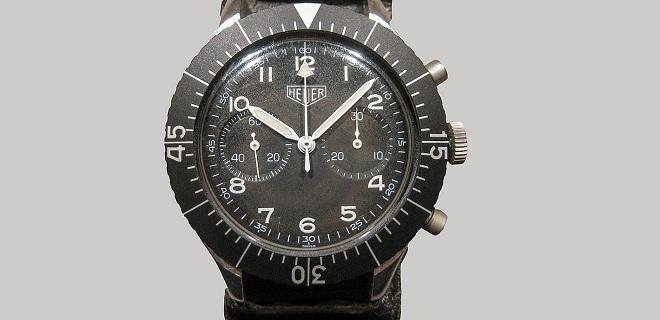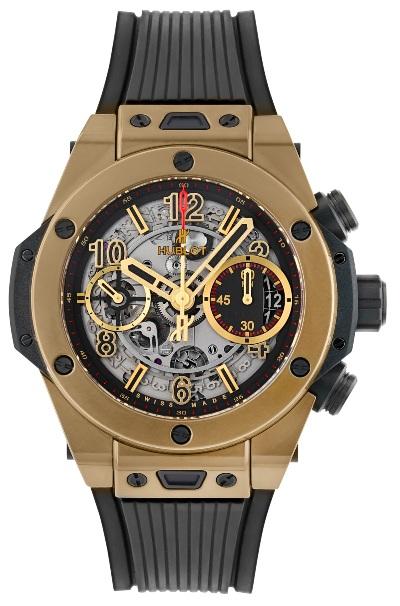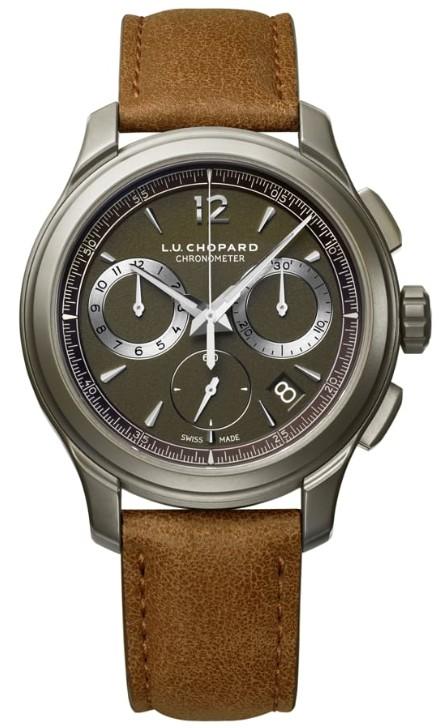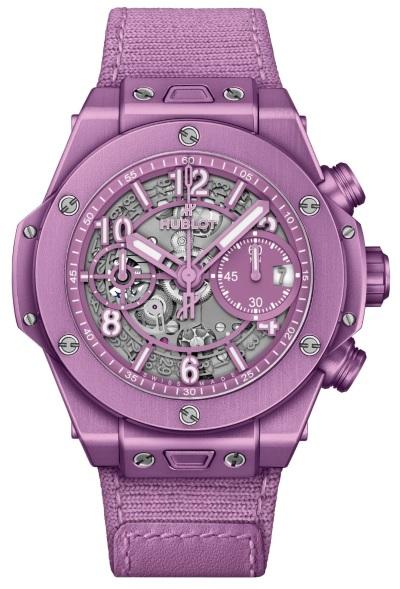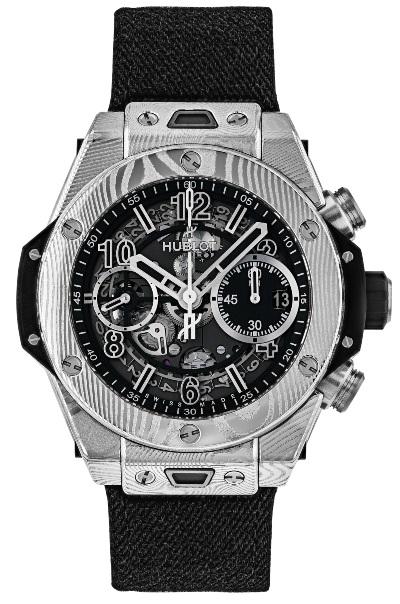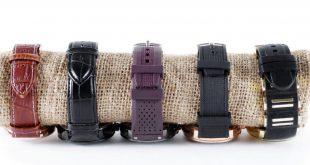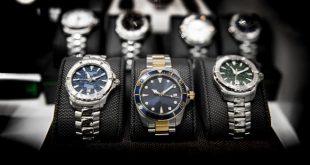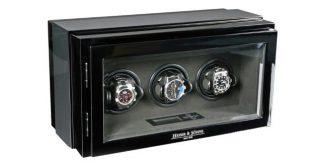When Masterpieces comes up with this, watch connoisseurs applaud. Sophisticated craftsmanship is hidden behind the inconspicuous function, which was sensational when it made its debut. Flyback watches are still being designed today because they are timelessly fascinating and testify to the expertise of the respective brand.
Groundbreaking invention: Restart on the fly
Chronographs are precision tools for measuring the duration of an event. This stop function primarily enhances wristwatches that have been developed for professional or sporting purposes. The flyback mechanism optimizes handling: the special models have two pushers for stopping a time stage. The one at the 2 o’clock position starts and stops the measuring process. The button at the 4 o’clock position is used to return to the starting position.
Flyback watches allow an alternative use of the second pusher: If you press it during the measuring process without releasing it, the second hand returns to its original position. All you have to do now is take your finger off the button to start the next measurement. The flyback function is also known as the flying zero position or “retour-en-vol”. If you like it trendier, you could use the term “reset” to explain this functional feature to a layperson.
Efficient operation for time measurements
Anyone who sees wristwatches not only as a style statement, but also as an instrument for sports or at work, will recognize the advantage: if you want to restart measuring processes or start the next measurement immediately, three actions are normally necessary. Stopping is followed by zeroing and starting the next counting process.
Mechanical stopwatches, which used to be used for sporting events, are intuitive to operate. It rests in one hand and the fingers hover over the buttons for quick reactions. It becomes more awkward when you have to reach for the opposite arm and press small buttons three times in the correct order. If every second counts, efficient flyback watches are a great help: They combine three steps into one action that you can complete without looking at the timer.
More safety and accuracy thanks to on-the-fly zero setting
The first flyback watch had barely been invented when it accompanied Richard Byrd, who flew over the South Pole for the first time in 1929. Anyone familiar with the conditions of early aviation will understand his enthusiasm. Wristwatches were important navigational instruments. For example, the chronograph was activated at the sight of a prominent landmark in order to safely plan the further course of the flight.
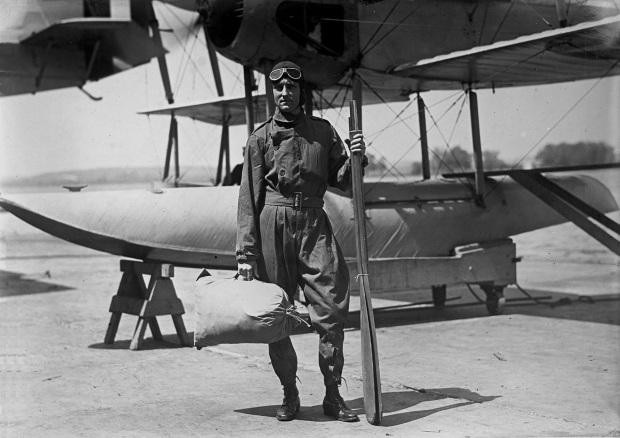
For long distances, it was necessary to stop time periods several times. Even if you performed the three maneuvers for zeroing as quickly as possible, the seconds lost added up. If you didn’t take this into account, you risked navigational errors, which could be fatal at high flying speeds. It was conceivable to miss the target or misjudge the fuel supply. Professional aviation pioneers took these differences into account using complicated calculation methods. They were simplified when the flyback function made its debut. The same applied to scientific and military measurements, which required precision to the second.
The initial spark: patent from Longines
The pioneering work was carried out by the Swiss brand Longines, which presented a flyback watch in 1925 that was praised by pilots. Around ten years later, it patented the function that characterized the legendary L13ZN calibre. It was a milestone in the art of watchmaking with an innovative movement design:
The classic design stipulates that the relevant movement element must be disengaged when the chronograph or the hands are moved to the zero position. If it remained engaged, damage would be inevitable. Longines has succeeded in integrating a mechanism that disengages and engages the zeroing process in an instant. It is the heart of the flyback function, which is one of the most sophisticated complications.
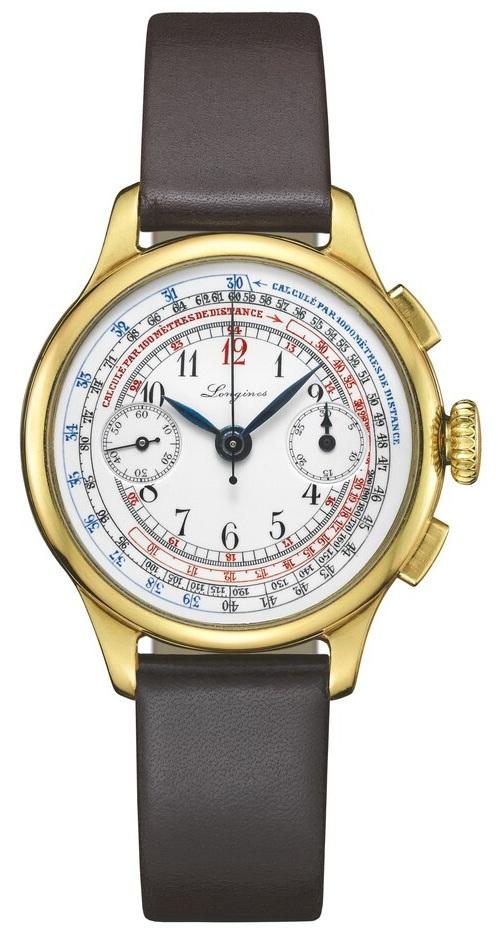
Refining inspiring ideas – Blancpain Fifty Fathoms
One brand ensured the comeback of the additional function in 1996 and still cultivates it today – for example with the Blancpain Fifty Fathoms Bathyscaphe Chronographe Flyback. It shows that the complication is also practical for diving when the manufacture masters a challenge: the more operating elements there are, the trickier it is to ward off penetrating environmental influences. The black Blancpain Fifty Fathoms Bathyscaphe Chronographe Flyback with 300 m water resistance, ceramic case and canvas strap succeeds in this mission.
Watch history brought to life – Chopard L.U.C. Chrono One Flyback
The flying zero setting is often a tribute to watchmaking tradition. The Chopard L.U.C. Chrono One Flyback is a prime example of this. The premium manufacturer has abandoned its preference for gold to create an authentic homage for this limited edition. The automatic chronograph pays tribute to the titanium alloy that plays a role in aviation. The watch design thus builds a bridge to aviation, for which the flyback function was developed. The khaki-colored dial and light brown leather strap reinforce the vintage charm.
A breath of fresh air for the tried and tested – Hublot Big Bang Unico Gourmet 42 mm
The luxury brand based in Nyon only made its debut in 1980. By then, the relevance of the flyback function had long since been put into perspective. Ambition and a love of high-contrast design were behind the idea of giving the colorful Hublot Big Bang Unico Summer Purple 42 and the Unico Gourmet the watch complication. It proves that unconventional approaches and traditional craftsmanship do not contradict each other. The same applies to the built-in chronograph movement: with its double clutch system and column wheel on the transparent dial side, it stands out from the ordinary.
By no means threatened with extinction – chronographs with flyback function
Aircraft, research or professional sport: there have long been measuring instruments that outperform mechanical flyback wristwatches in terms of accuracy and functionality. Apart from a brief pause during the quartz crisis, the chronograph add-on mechanism has held its own. Those who have a soft spot for it are catered for by ambitious watch manufacturers in a variety of ways, for example:
- Audemars Piguet Code 11.59 Ultra-Complication Universelle (RD#4)
- Breguet Type 20 Chronographe 2057
- Frederique Constante Chronograph Manufacture Flyback watches
- Hublot Big Bang Unico Summer Purple 42 Special Edition
- Hublot Big Bang Unico Gourmet 42-mm
- Longines Spirit Flyback
- Patek Philipp 5935A Worldtimer
- Raymond Weil Freelancer Pilot
- Rolex Yacht-Master II
- Tag Heuer Monza Flyback watches
- Zenith Pilot Big Date
_____________________________________________________________________________________
Source image for the article: From File:Heuer Fliegerchrono 1.jpg: Gordito1869derivative work: Superbass – This file was derived from this work: Heuer Fliegerchrono 1.jpg:, CC BY 3.0, https://commons.wikimedia.org/w/index.php?curid=114514042
 Uhrinstinkt Magazine
Uhrinstinkt Magazine
